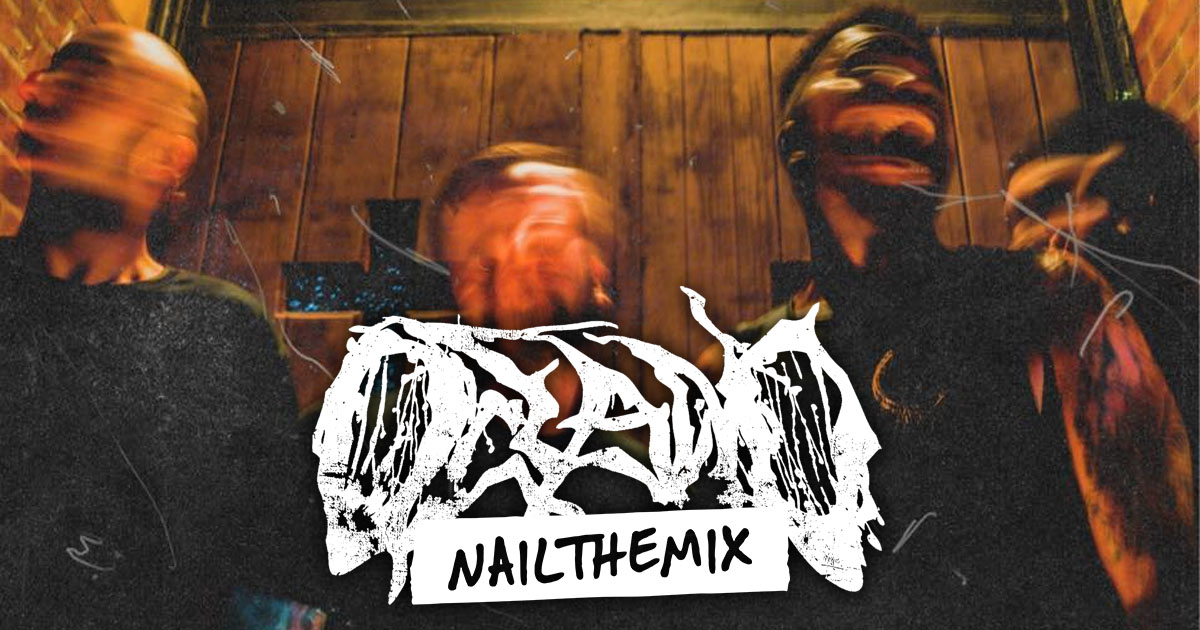
Spiritbox Singer: How Courtney LaPlante’s Vocals Define Their Sound
Nail The Mix Staff
Spiritbox’s meteoric rise isn’t just down to killer riffs and atmospheric soundscapes; a massive part of their sonic identity is the incredible vocal prowess of Courtney LaPlante. Her ability to shift from ethereal cleans to gut-wrenching screams isn’t just impressive; it’s a defining characteristic that shapes their entire mix.
Ever wonder how those vocals sit so powerfully yet clearly in such dense arrangements? It’s a blend of raw talent and smart production. Let’s dive into some of the techniques that help make the Spiritbox singer’s vocals a formidable force in their tracks.
The Ascent of Spiritbox & Courtney’s Vocal Signature
Spiritbox, fronted by the dynamic Courtney LaPlante, quickly carved out a unique space in heavy music. Albums like Eternal Blue showcased their ability to blend crushing heaviness with moments of haunting beauty, and Courtney’s vocals are the glue that binds these contrasting elements. Her seamless transitions between angelic singing, aggressive mid-range screams, and powerful low growls provide an incredible dynamic range. This isn’t just a gimmick; it’s fundamental to their songwriting and presents a fantastic challenge (and opportunity!) for any mix engineer. How do you make room for such a versatile performance without one aspect overshadowing the other, or getting lost in a wall of guitars and drums?
Deconstructing the Spiritbox Vocal Sound: What Makes It Cut Through?
Getting vocals like Courtney’s to sit right in a busy metal mix involves careful attention at every stage, from recording to the final polish. It’s about more than just turning them up; it’s about strategically shaping them to command attention.
Capturing the Raw Performance: Mics and Preamps
It all starts at the source. While Courtney’s specific gear might be a closely guarded secret, achieving a similar vocal quality relies on solid choices and a great vocal recording technique:
- Microphones: For those powerful screams and aggressive mids, a dynamic mic like the Shure SM7B is a studio staple. It handles high SPLs like a champ and has a natural way of smoothing out harshness. For pristine cleans, a high-quality condenser mic is often the go-to. Think something along the lines of a Neumann U87 Ai, Telefunken TF51, or even a more accessible option like an Aston Spirit or Rode NT1. The key is capturing clarity without unwanted brittleness.
- Preamps: Pairing your mic with a quality preamp makes a huge difference. A Neve 1073-style preamp (from brands like BAE, Heritage Audio, or even plugin emulations from UAD or Slate Digital) can add warmth and weight. For a punchier, more aggressive tone, an API 312 or 512c style preamp could be the ticket.
Don’t forget the performance itself! Consistent distance from the mic, good breath control, and minimizing plosives (a good pop filter is your best friend) will give you a much cleaner signal to work with.
The Clean Vocals: Clarity and Presence
Courtney’s clean vocals often soar above the mix, demanding a delicate balance of clarity, body, and space.
EQing for Air and Body
This is where you sculpt the tone. A good producer knows how to EQ vocals to achieve both clarity and power.
- Low-Cut (High-Pass Filter): Start by rolling off unnecessary low-end rumble. Using an EQ like FabFilter Pro-Q 3, you might set a high-pass filter around 80-120Hz with a 12dB or 18dB per octave slope. This cleans up space for the bass and kick.
- Body and Warmth: If the cleans feel a bit thin, look for fundamental frequencies in the 150-300Hz range. A gentle, wide boost here can add warmth, but be careful not to make it boomy.
- Clarity and Presence: The 1kHz-4kHz range is crucial for intelligibility. Small, strategic boosts can help the vocal cut through, but too much can sound nasal or harsh.
- Air and Sparkle: For that high-end sheen, a gentle shelf boost above 10kHz using something like a Maag EQ4 (or its plugin equivalents like the Plugin Alliance Maag EQ4) can add beautiful air. Some engineers prefer a subtle bell curve boost around 12-16kHz.
For more in-depth EQ strategies, especially for metal, check out our EQ hub page.
Compression for Control and Smoothness
Clean vocals in metal still need to be controlled to sit consistently. Often, multiple stages of compression work best.
- Peak Control: First, an 1176-style FET compressor (like the UAD 1176LN Rev E, Waves CLA-76, or Slate Digital FG-116) can quickly tame loud peaks. Think fast attack (maybe around 3-5 on the dial, which is actually very fast) and fast release (5-7 on the dial), with a ratio of 4:1 or 8:1, aiming for 2-3dB of gain reduction on the loudest parts.
- Overall Smoothing: Follow it up with an LA-2A-style optical compressor (like the UAD LA-2A Silver, Waves CLA-2A, or IK Multimedia T-RackS Opto Compressor). These have a slower, more musical response and are great for overall level smoothing. You might only be getting 1-2dB of gain reduction here, but it adds a lovely polish.
Dive deeper into how compression can shape your metal tracks on our Compression hub page.
Reverb and Delay: Creating Space and Depth
Ambience helps situate the vocal in the mix.
- Reverb: Plate reverbs are a classic choice for vocals, offering a bright, smooth decay. Plugins like ValhallaPlate, Arturia Rev PLATE-140, or Soundtoys Little Plate can sound fantastic. Try a medium decay time (1.5-2.5 seconds) and EQ the reverb return, rolling off lows and highs so it doesn’t cloud the mix.
- Delay: Subtle delays can add width and depth. A stereo slap-back delay (short, around 80-150ms) or a timed 1/8th or 1/4 note delay tucked underneath the vocal can work wonders. Soundtoys EchoBoy or FabFilter Timeless 3 offer immense control. Pan the delays slightly for extra width.
The Screams and Growls: Power and Aggression without Harshness
Courtney’s screams are intense and need to sound aggressive without being painful to listen to.
Taming Harshness with EQ
Screams generate a lot of complex harmonics, some of which can be piercing.
- Problem Frequencies: The 2kHz-5kHz range can get very harsh. Instead of a static cut, consider a dynamic EQ (like FabFilter Pro-Q 3 in dynamic mode, or Waves F6 Floating-Band Dynamic EQ) or a multi-band compressor to only attenuate these frequencies when they poke out.
- De-Essing: Sibilance (“s” and “t” sounds) can be exaggerated in screams. A dedicated de-esser like FabFilter Pro-DS or Waves Sibilance targeting 5kHz-10kHz can be essential.
- Notching Out Resonances: Sometimes specific, narrow frequency bands will ring out unpleasantly. Use a high-Q cut on your EQ to surgically remove these.
Compression for Aggression and Sustain
Screamed vocals often benefit from more aggressive compression to even out the performance and add sustain.
- Heavy Compression: Don’t be afraid to hit the compressor harder. An 1176-style plugin with all buttons in (“British mode”) or a high ratio (12:1 or 20:1) can add serious character and energy. Watch your gain reduction – you might be getting 5-10dB or more here.
- Parallel Compression: Blend a heavily compressed version of the vocal (crushed!) with the original, less compressed track. This gives you the body and sustain of the compressed signal with the transients and clarity of the original. Send the vocal to an aux track, slam it with a compressor (like a Distressor emulation, e.g., Empirical Labs Arousor, or even a stock DAW compressor pushed hard), and then blend that aux track back in to taste.
Saturation and Distortion: Adding Grit and Harmonics
Subtle (or not-so-subtle) saturation can help screams cut through, and learning how to mix screaming vocals with techniques like parallel distortion adds even more character.
- Plugin Choices: Soundtoys Decapitator is a favorite for adding anything from subtle warmth to outright fuzz. FabFilter Saturn 2 offers incredible versatility with different saturation styles (tape, tube, transformer). Even a simple guitar amp sim on a parallel track, blended in low, can add useful harmonics.
- How to Use: Try adding it after compression. Focus on adding harmonics in the mid-range that help the vocal translate on smaller speakers. Be careful not to make it sound thin or overly distorted unless that’s the specific effect you’re after.
Blending Cleans and Screams: The Dynamic Contrast
The transitions between vocal styles are key to Spiritbox’s sound. Automation is your best friend here.
- Volume Automation: This is essential for balancing levels between sections.
- EQ Automation: You might want different EQ settings for cleans versus screams. Automate bypass on certain EQ bands or automate the parameters themselves. For example, you might need more aggressive high-mid cuts on screams that aren’t necessary for cleans.
- Effects Sends: Automate reverb and delay sends. Cleans might get more spacious effects, while screams might be drier or use shorter, grittier ambiences.
Sending both clean and scream vocal tracks (or their respective groups) to a common vocal bus allows for cohesive processing (light overall compression, bus EQ) to “glue” them together.
Spiritbox on Nail The Mix: Learn From The Source
Speaking of getting that signature sound, we’ve been lucky enough to have Spiritbox themselves on Nail The Mix – not once, but twice! Imagine getting the multi-tracks to their songs and watching the actual producer who worked on their material break down how they approached the mix, including those all-important vocals. That’s exactly what you get.
You can check out the details and get access to these incredible sessions right here: Spiritbox on Nail The Mix 2020. It’s an invaluable opportunity to see how these techniques are applied in a real-world, high-level production context.
Applying These Techniques To Your Mixes
The power and clarity of Courtney LaPlante’s vocals are a testament to great performance and skillful production. Key takeaways for your own vocal mixing:
- Start with a good recording: Mic choice and preamp matter.
- Sculpt with EQ: Address problem frequencies and enhance desirable qualities. Use our EQ strategies guide for more.
- Control dynamics with compression: Use multiple stages for different purposes. Our metal compression secrets can help.
- Add space with reverb and delay: But don’t let them wash out the vocal.
- Use saturation for character and cut-through, especially on aggressive vocals.
- Automate everything to bring out the performance and manage transitions.
These are starting points. Experiment with different plugins, settings, and signal chains. The goal is to serve the song and make the vocals shine.
If you’re serious about taking your metal productions to the next level and want to see exactly how pro producers tackle challenges like mixing dynamic vocals, check out Nail The Mix. You’ll gain access to a treasure trove of knowledge, multi-tracks from huge bands, and live mixing sessions every month. It’s time to Unlock Your Sound: Mixing Modern Metal Beyond Presets.
Spiritbox on Nail The Mix
Daniel Braunstein mixes "Holy Roller" Get the SessionCourtney LaPlante’s vocals are a huge part of what makes Spiritbox so compelling. By understanding the techniques used to shape such a dynamic performance, you can start applying these concepts to make your own vocal tracks more powerful, clear, and impactful in your metal mixes. Happy mixing!
Get a new set of multi-tracks every month from a world-class artist, a livestream with the producer who mixed it, 100+ tutorials, our exclusive plugins and more
Get Started for $1






